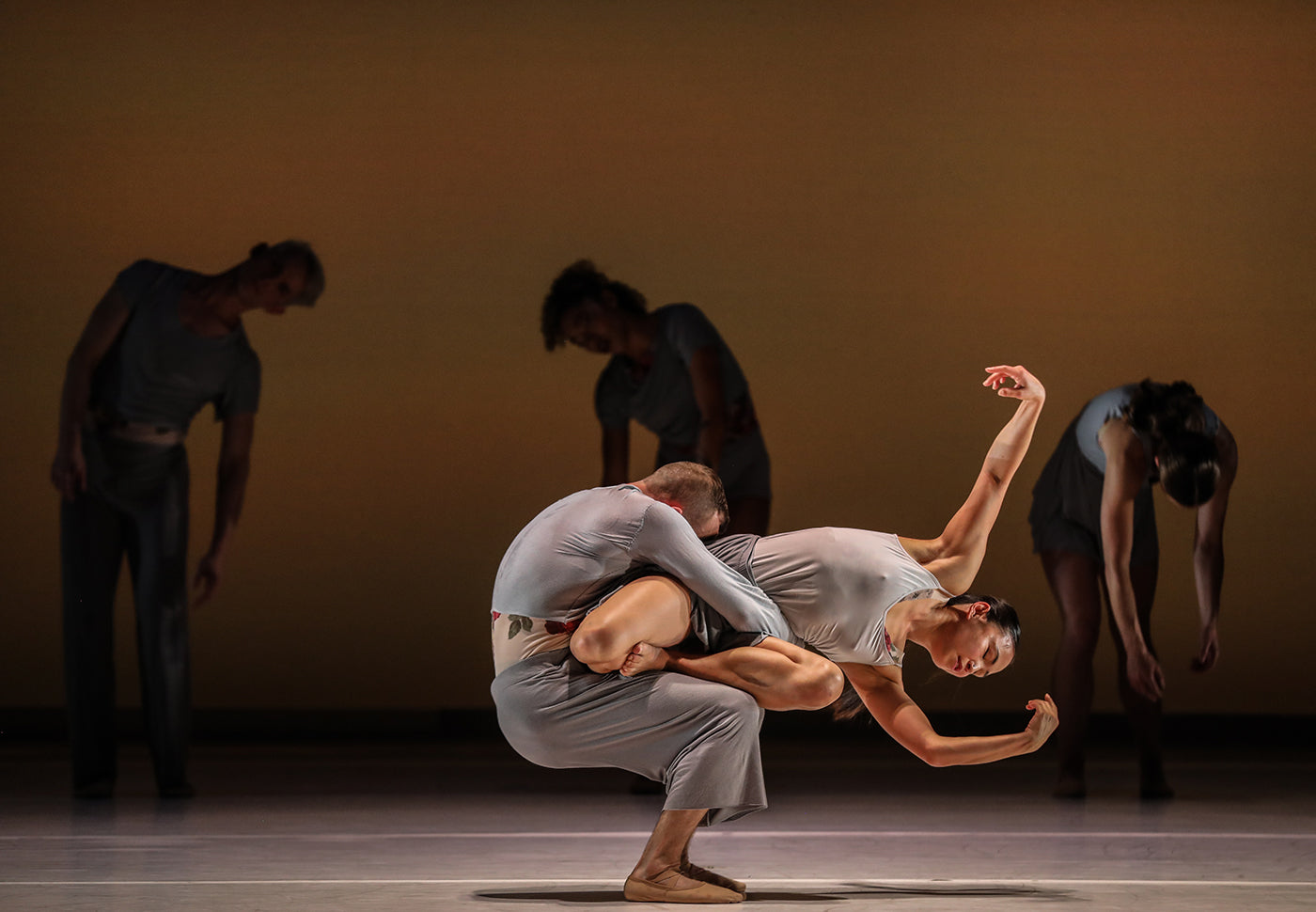The staging of “d’après une histoire vraie” is minimalist; a set-design suited to the unembellished style of Rizzo’s choreography. The blank, off-white expanse is broken only by a single plant pot and chair resting in the corner and two drum kits, set expectantly upstage.
The piece begins in silence as one dancer removes his shoes and takes to the stage. His movements are slow and precise. Gradually he is joined by the other dancers of this all-male company and together they continue to build a sequence of simple movements; deep lunges, a raised arm or leg, rolling and lying on the floor. The dancers repeat these moves carefully and decisively, until a passing phrase becomes a solid image.
As the slow pace continues, the wait begins. There’s a growing expectation as the musicians take their place and a trembling sound rises from the cymbals. The dancers begin to ripple their bodies, a motif that rolls wave-like between them.
When the drums kick in, nothing changes. As the rhythms build you urge the dancers to feel the power of the beat but a bobbing of the upper body is as far as it gets. Despite the infectious energy of the drummers, the dance remains placid.
The movement itself is an accurate study of the folk dance traditions it is based on. Rizzo’s choreography revolves around lines and walking patterns, small steps that mark time with the music. Sometimes these lines morph into circles, the dancers’ arms resting across each other’s shoulders.
In a momentary wave of energy the dancers link arms and weave in and out of one another, knotting and unknotting their bodies. Just as this spectacle begins to peak, one by one the dancers lie on the floor and calm returns.
Rizzo keeps pushing at the boundaries of his audience’s attention as we wait for this piece to come alive. It’s rather like Waiting for Godot—while there’s just enough going on to maintain the interest, you can’t help beginning to wonder whether anything more will ever materialise.
Then, just as concentration begins to waver the stage clears, the drums crescendo and the musicians provide the dynamic punch we’ve been waiting for. The lights flicker with the beat and you can’t help but feel immersed in the rhythm. It’s a shame that, when a dancer walks on stage, his ensuing movement breaks rather than continues this drive.
Once you accept Rizzo’s choice, there’s a calm enjoyment in the quietude of his movement. The patterning and precision of the dancers’ steps, the placement of bodies in space, is interesting to observe. There’s something enticing in counteracting an audience’s expectations but the minimalism of this work may not be enough to sustain everyone’s attention.
As the drums stop the dancers spiral, moving around the stage like orbiting planets, engaging in trios and duets where their bodies wrap around each other. The time spent watching begins to feel particularly noticeable and you wonder if this is as interesting as their movement will get. Finally you let go of expectation.
Rizzo has timed his work with acute precision. Its dynamic shift comes at the last instant and in the style of this work it arrives slowly. Started by a single dancer, the choreography picks up in pace and elevation until the company are dancing together in a scene filled with life. The sombre village party has become a fiesta. It feels rather like being dropped into the middle of a town square and becoming a spectator of the festival around you.
“d’après une histoire vraie” is an intriguing, careful study of Rizzo’s memories. Even with a set that denies the piece cultural context, Rizzo’s choreography is evocative enough to make you feel as if you’ve also shared in his experience. He constantly challenges his audience to let go of their expectations, to stop second guessing and enjoy the beauty that lies in subtlety.
The relaxed, informal attitude of “d’après une histoire vraie” is undeniably more true to life than a theatrical staging. Yet, when the musical accompaniment is so full of life as to stir even the most relaxed of souls to action, you can’t help yearning for the dancers to follow suit. When they do, it has taken so long to get there that you leave feeling uncertain whether, for a staged performance, this was really enough.









comments